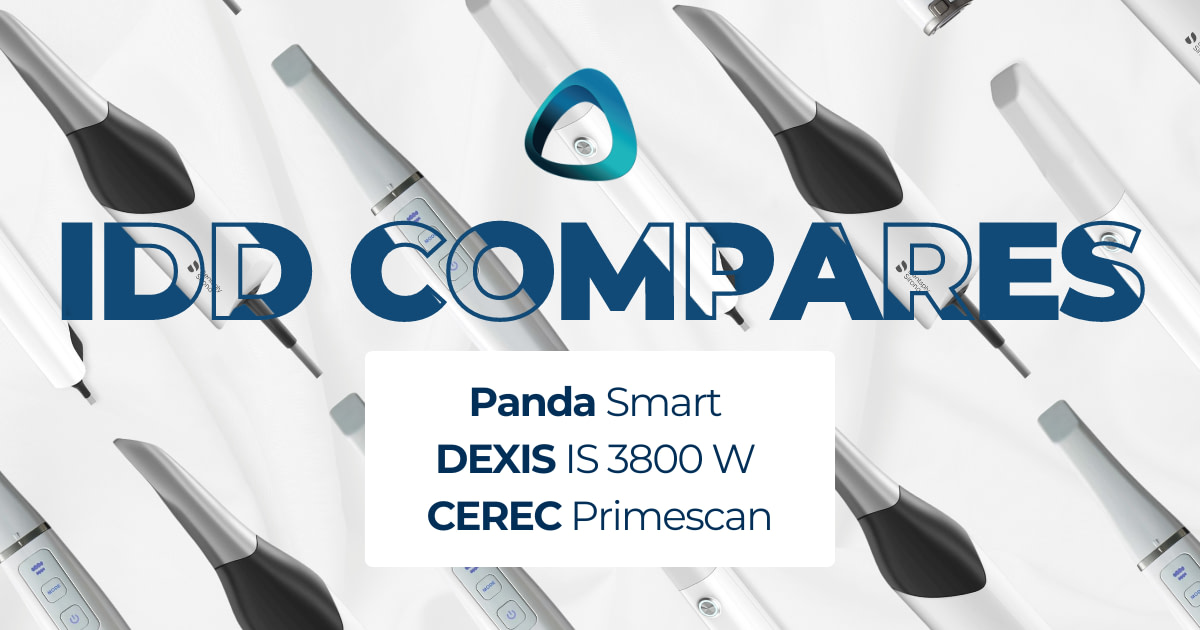For all of those who’ve been asking us to review and compare the Panda Smart and DEXIS IS 3800 W intraoral scanners (IOS), this iDD Compares blog post is for you!
I scanned this patient, the same 46 crown prep, with three different scanners on the same day:

From top to bottom: Panda Smart, DEXIS IS 3800 W, and CEREC Primescan.
Remember to follow iDD across all our socials and subscribe to our newsletter to keep up to date with the latest Compares case we release, as well as other intraoral scanners (IOS) and 3D printer reviews and the latest announcements from the digital dentistry world.
Keep reading to know more about the individual IOS and the results of the individual scans - pictures of the color scan, exported STLs, tessellated mesh, and a close-up of the prep margin.
Panda Smart
iDD has already released an unboxing video of this scanner with all the key details.
I have been using the Panda Smart IOS in my clinic for close to 6-7 months now for basically all indications - simple crown and bridge, scanning edentulous patients, scanning for implants, etc.
Some of the key highlights of this scanner are its exceptionally small size and lightweight at 138 grams, making it the lightest IOS - even lighter than the Medit i900 at 165 grams.
The Panda Smart also has decent scanning capabilities, which are major pros. However, software limitations and a small field of view are potential cons.
Panda also offers interesting software features, including a free cloud service, an iPhone app with AI-powered smile design, and basic CAD capabilities, though some of these tools need improvement.
You can watch our full overview below:
DEXIS IS 3800 W
The DEXIS IS 3800 W IOS weighs 240 grams, almost 100 grams heavier than the Panda Smart.
We often get messages asking iDD about the DEXIS 3700 and DEXIS 3800.
So, for those interested, the DEXIS IS 3800 W offers a pretty decent upgrade from the DEXIS 3700, primarily because of its wireless capability. This means better mobility and ease of use.
Additionally, the DEXIS 3800 has a faster scan speed of up to 100 frames per second compared to the 3700. It also provides accurate color capture and allows users to toggle the light on/off when capturing scans.
CEREC Primescan
Dentsply Sirona has pioneered chairside digital dentistry with the development of CEREC (CEramic REConstruction) in 1985, revolutionizing the industry with its focus on ceramic restorations.
The CEREC system offers a complete in-house ecosystem including scanner, CAD software, milling machine, and ceramic furnace, making Dentsply Sirona unique as the only manufacturer providing a full same-day workflow solution.
iDD has extensive experience with CAD/CAM technology, including over eight years with the CEREC Omnicam and since the introduction of CEREC Primescan and Primemill systems.
Did you know we also offer CEREC training so you can become a confident CEREC user, maximize your ROI, and master same-day workflow?
CEREC Masterclass Bundle
Maximize your CEREC’s capabilities, and train your team to use your CEREC correctly. We’ve put together this comprehensive bundle of CEREC training that is fun and easy to understand.
Plus CAD/CAM and materials processing bonus courses so you have the complete workflow.
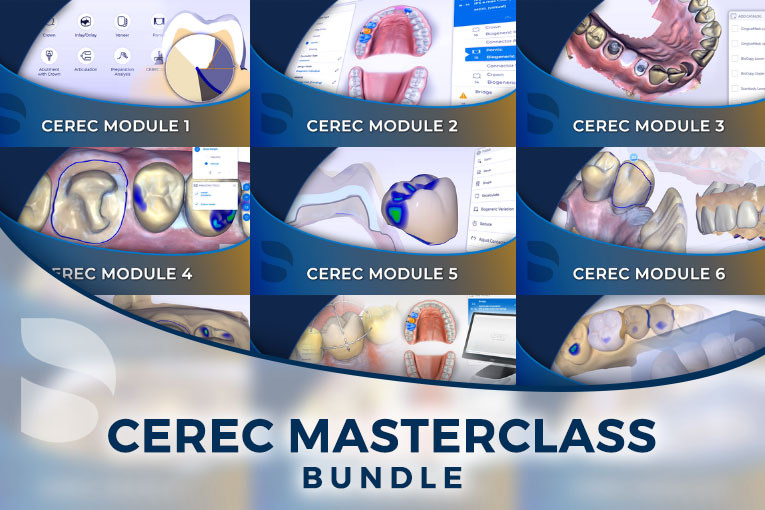
12 Courses + 16 Bonuses
$1,997 US $997
Individual Scans in their Native Software
Every intraoral scanner has its own scanning software.
Almost all scanners can remove scan artifacts such as movable soft tissue, cheeks, and tongue through AI, with some performing better than others.
Interestingly, each scanner software captures color (called texture) differently. Below, you can see what the native scan images look like for each scanner.
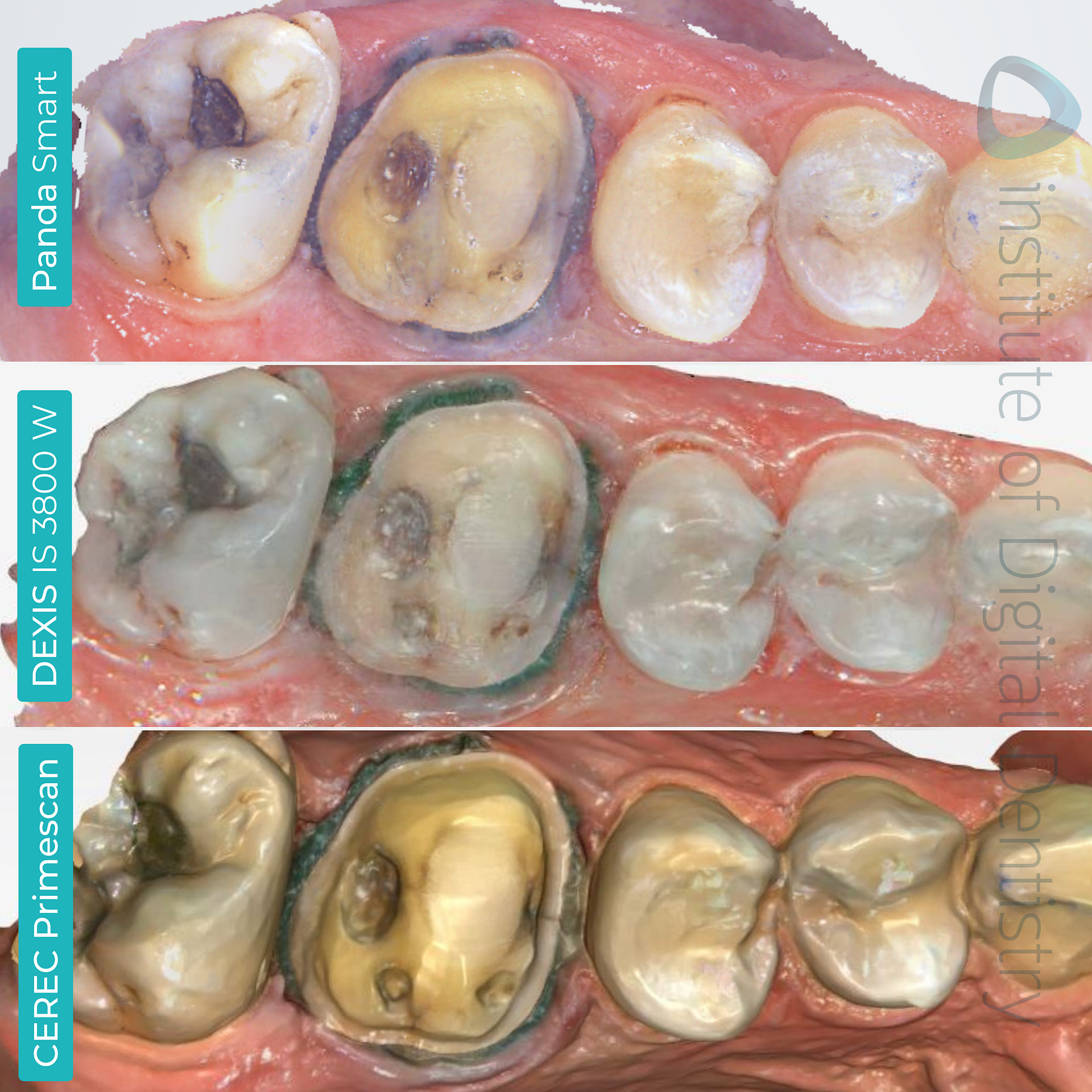
The processed, colored scans of the same tooth preparation were captured using three scanners and previewed in their native software.
The Panda Smart and the DEXIS IS 3800 W IOS capture more photorealistic scans and color texture, a staple that almost every Chinese IOS on the market possesses. In contrast, CEREC Primescan displays a more saturated, yellow hue than the other scans.
Regarding brightness, it’s important to note that DEXIS can toggle the brightness/light on and off within its native software.
Monochromatic scans can also be taken and previewed in their native software. By looking at scans in monochrome, one can get a better view of the prep's quality.
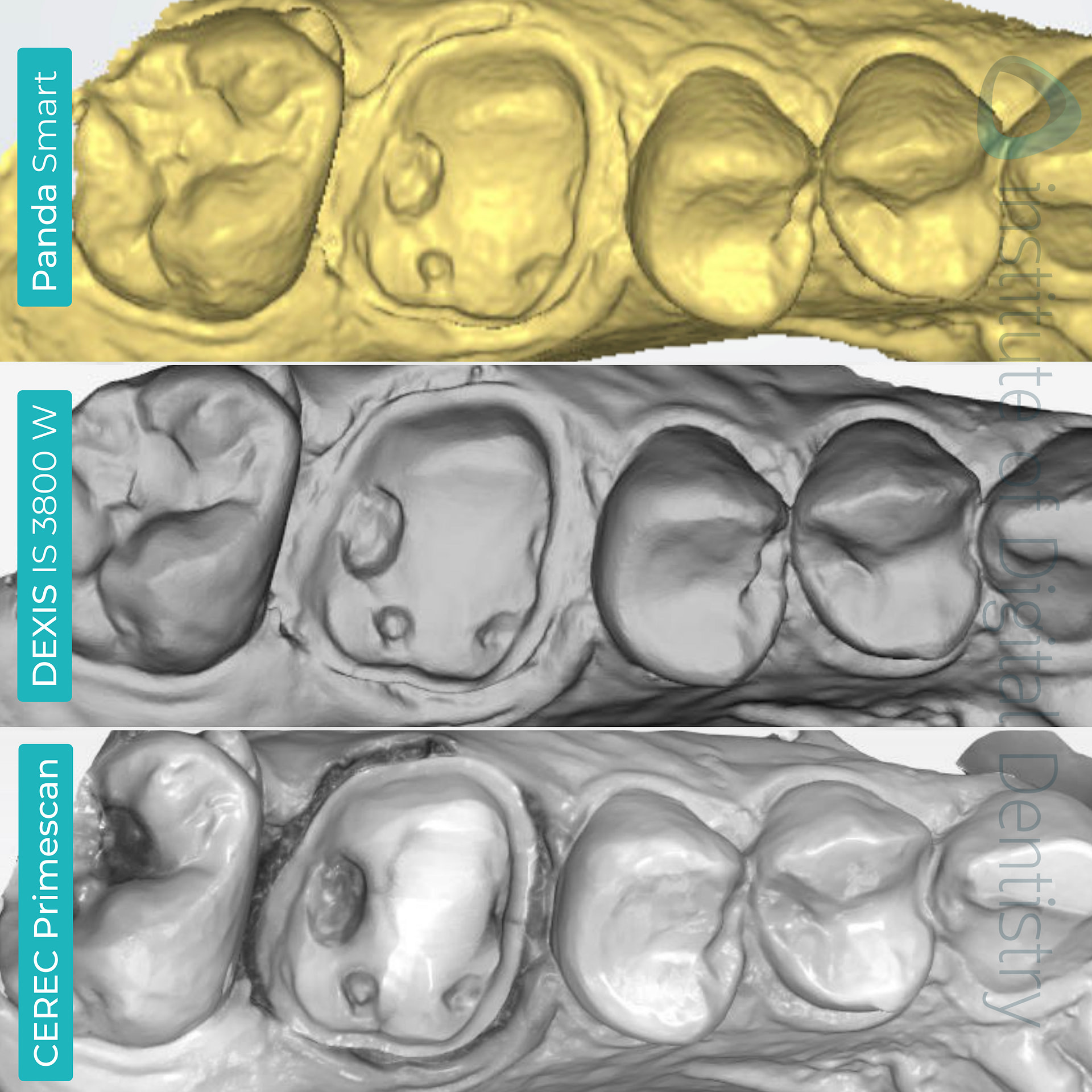
The processed monochromatic scans of the same tooth preparation were captured using three different scanners, as previewed in their native software.
As expected with CEREC Primescan, its monochrome scan displays more details on the prep quality in this view than DEXIS IS 3800 W and Panda Smart, which appears to have captured a rougher scan surface.
Exported Scans in Third-Party Software
All intraoral scanners have an open architecture that allows scans to be exported and sent to labs.
These scans are usually exported in three formats - STL, PLY, or OBJ files.
STL files are exported as monochromatic scans, whereas OBJ and PLY files store color (texture).
Not all intraoral scanners can export OBJ and PLY files, whereas STL files are widely used as the industry's default setting.
This particular set of scanners is capable of exporting scans in these formats:
- Panda Smart and DEXIS IS 3800 W - STL and PLY
- CEREC Primescan - STL only (unless connected to a lab via DS connect and then PLY can be exported lab side)
Intraoral Scanner | STL | PLY | OBJ |
|---|---|---|---|
Panda Smart | 12.2 MB | 11.6 MB | - |
DEXIS IS 3800 W | 4.3 MB | 2 MB | - |
CEREC Primescan | 13 MB | - | - |
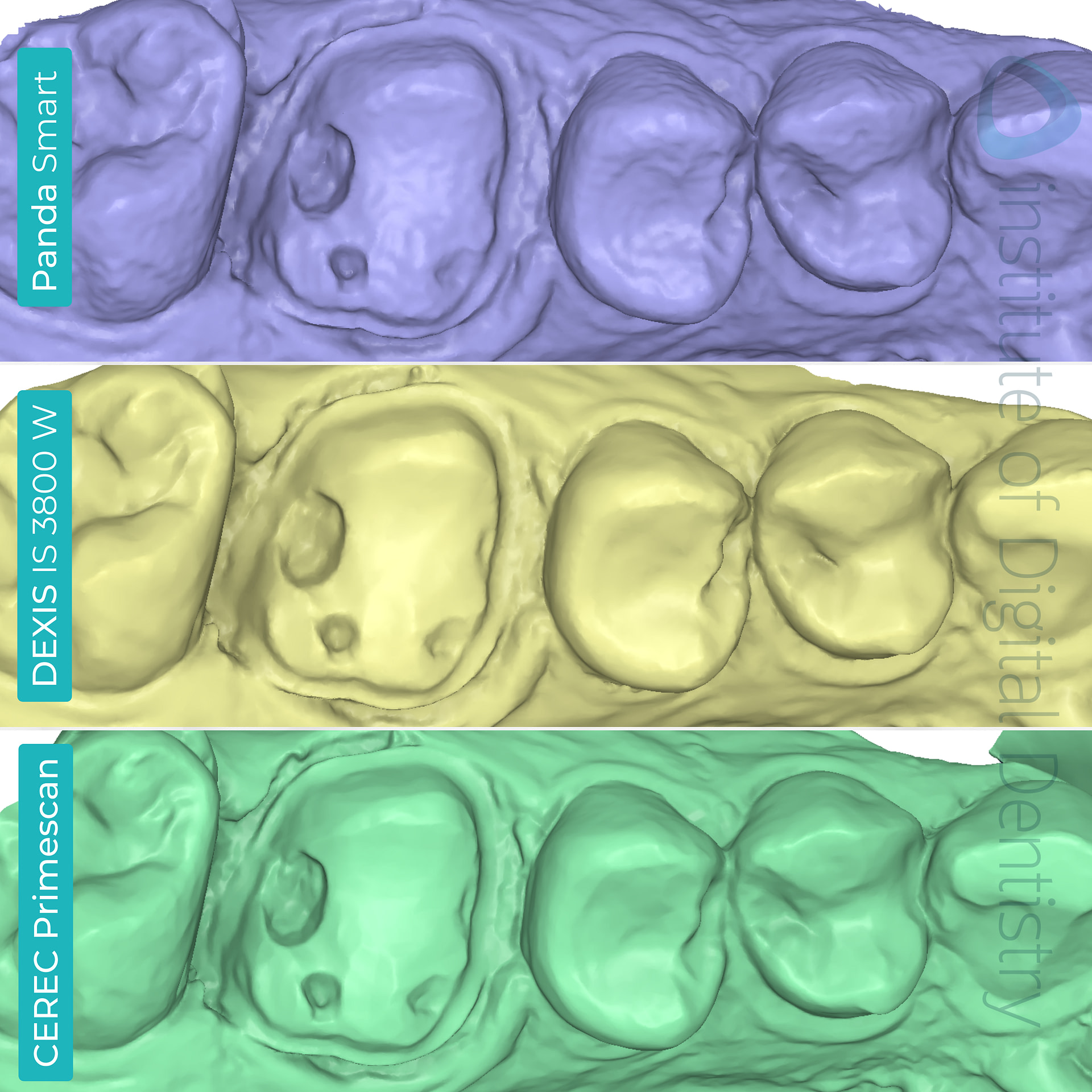
All scans were exported in an STL format and previewed in the Medit Design app.
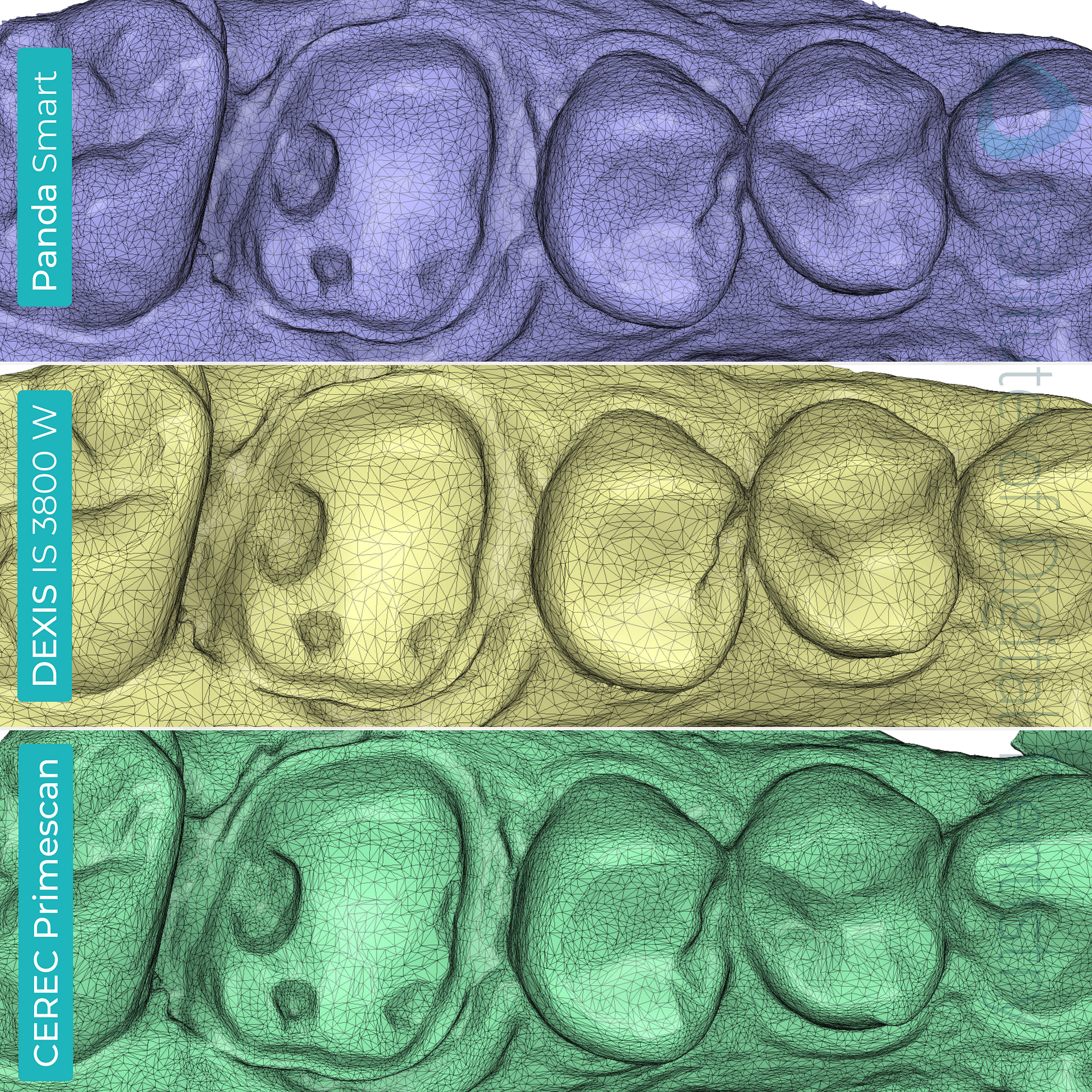
Tessellation mesh density of the three scans as previewed in the Medit Design app.
We can also look at the tessellation mesh of each scan within Medit Design.
When we look at the scans' tessellated mesh, we can see that DEXIS’ IS 3800 W has the least dense tessellation mesh compared to Panda Smart’s and CEREC’s Primescan scans, which possess the densest tessellation mesh.
This can be further supported when looking at the STL file sizes with DEXIS, with 4.3 MB as the least dense tessellation mesh, compared to Primescan, with 13 MB as the most dense tessellation mesh.
Studies investigating the clinical significance of mesh density have yet to be conducted from our understanding. It is important to note that a denser mesh does not necessarily indicate a ‘better scan.’
Let’s take a closer look at the prep margins.
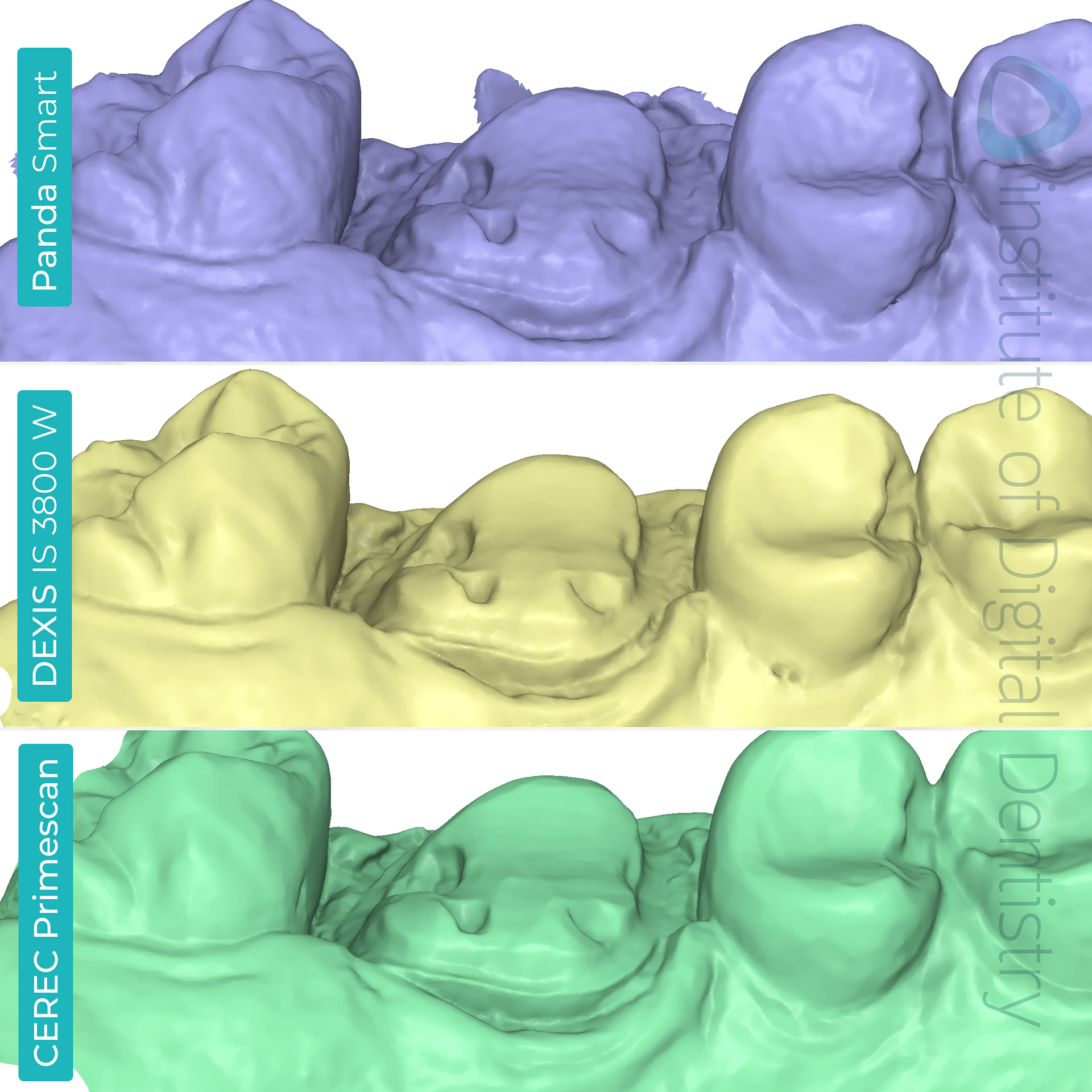
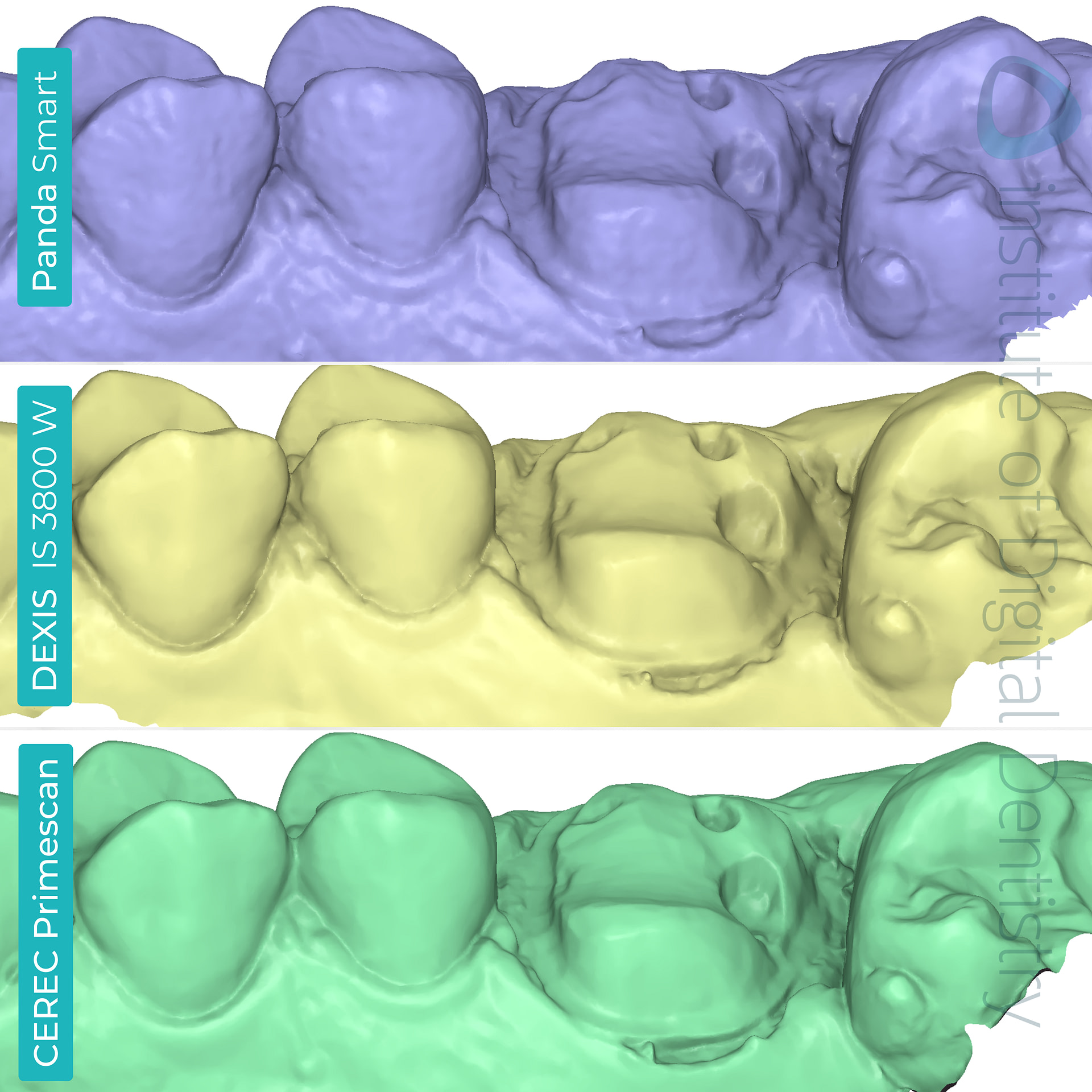
It’s quite interesting to see the texture of the scan quality be different between the Panda Smart and the other two scans. In comparison, the Panda seems to appear ‘rougher’ rather than the smooth appearance of the prep and adjacent teeth of the scans taken with DEXIS and Primescan.
When looking at the prep margin line itself, both Primescan and DEXIS seemed to have captured it better than Panda. However, Primescan, as expected, has captured the margin lines the best out of all three IOS.
Dentsply Sirona’s CEREC Primescan is commonly seen as one of the gold standards of intraoral scanners (IOS) in the dental community. It is regarded as one of the most accurate on the market.
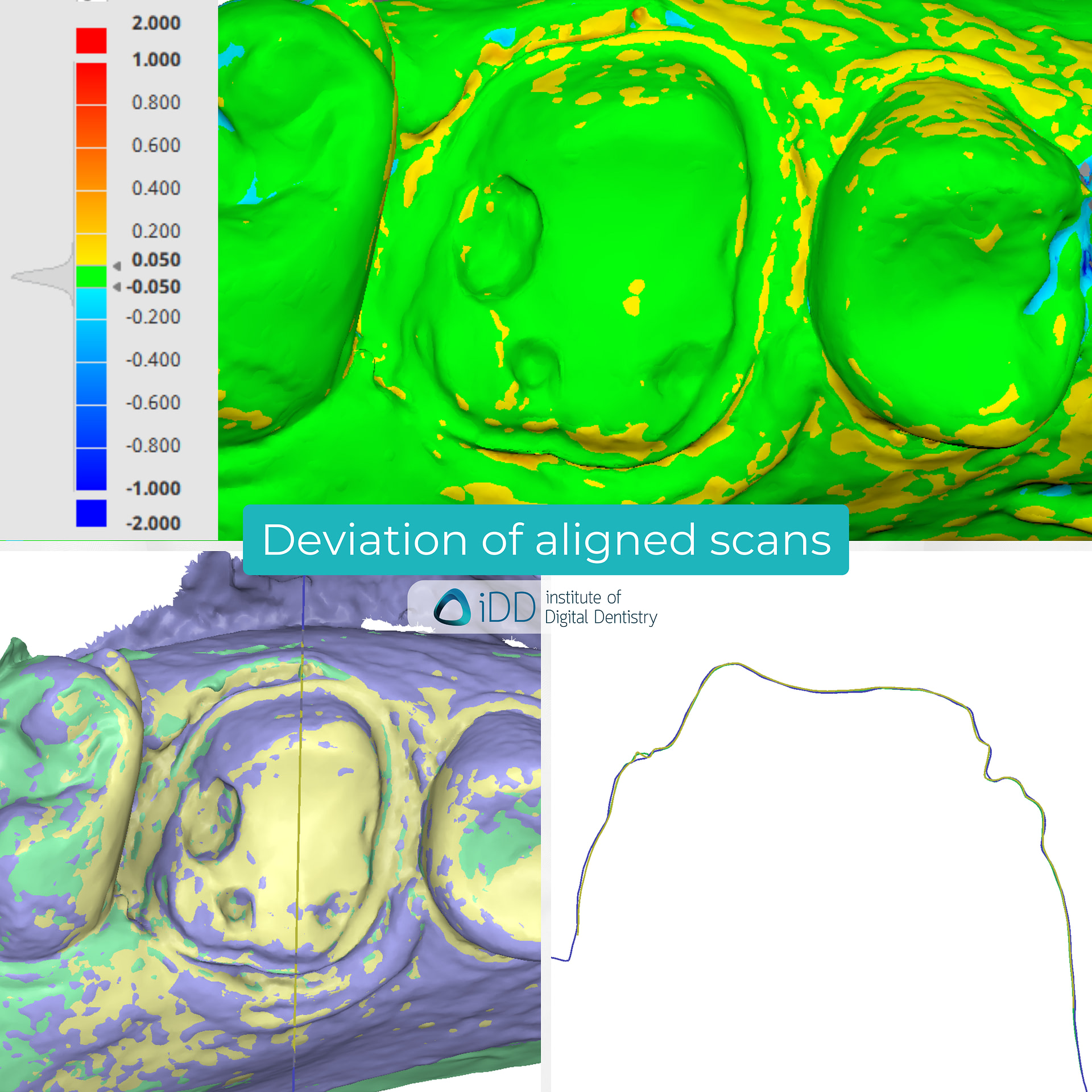
Deviation map of the scans compared to CEREC’s scan and sectional view. There seems to be minimal deviation around the prep area.
Based on the colored deviation key, we can see that the scan meshes are mostly within 50 microns compared to the scan taken with CEREC Primescan. However, some regions do fall outside the 50 microns tolerance range, as indicated by the yellow shading.

Photo of the patient's prep and final restoration.
Conclusion
Capturing precise details for restoration preparation can vary depending on the clinician's scanning technique and the scanner model.
These factors may influence the accuracy of the final restoration margin produced by dental lab technicians.
We're eager to hear your thoughts!
Which intraoral scanners would you like to see compared in our next head-to-head evaluation?
Share your preferences in the comments below.

